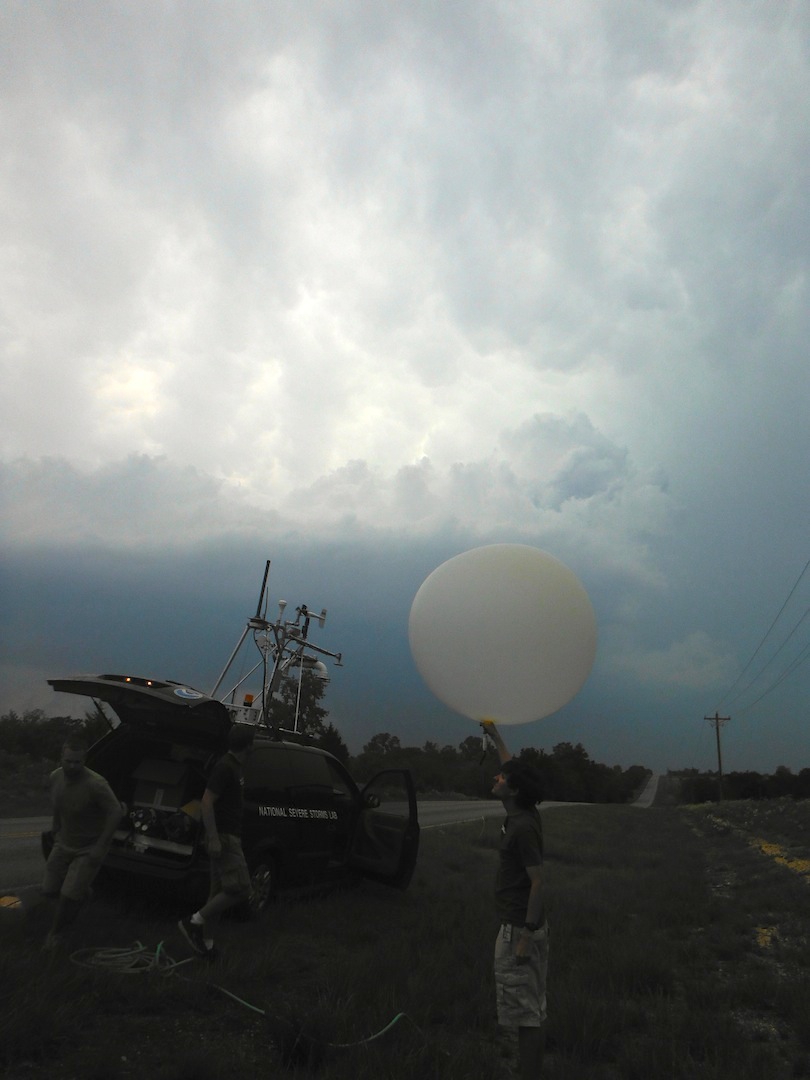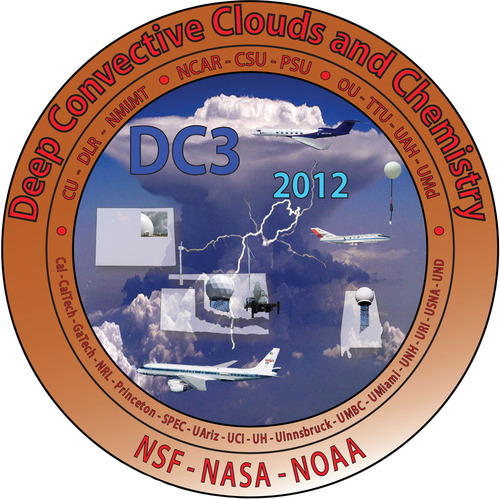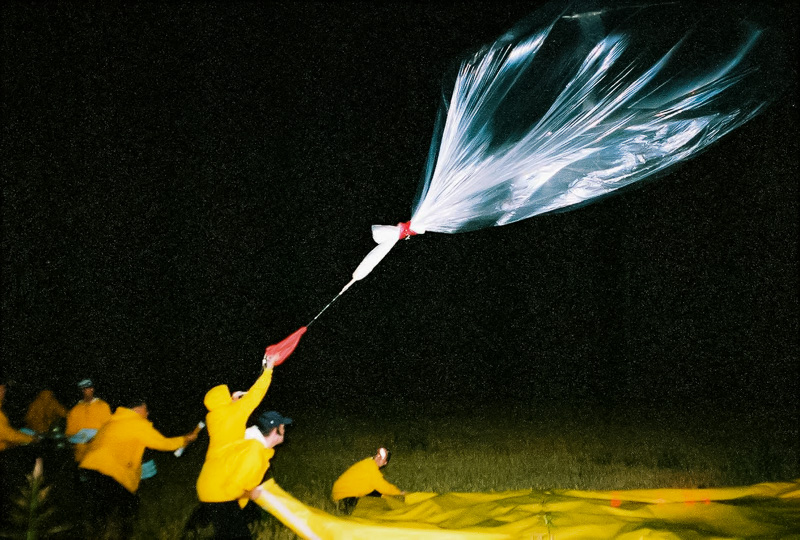 Today, researchers launched the Mesoscale Predictability EXperiment (MPEX) field project to collect data on pre-storm and post-storm environments in an effort to better predict where and when thunderstorms will form. MPEX runs from May 15 – June 15, and is funded by the National Science Foundation.
Today, researchers launched the Mesoscale Predictability EXperiment (MPEX) field project to collect data on pre-storm and post-storm environments in an effort to better predict where and when thunderstorms will form. MPEX runs from May 15 – June 15, and is funded by the National Science Foundation.
NSSL researchers will team with Colorado State University and Purdue to launch weather balloons carrying instrument packages called radiosondes. They hope to find out how thunderstorms interact with the atmosphere that surrounds and supports them, and how this affects formation of new thunderstorms. They also hope to ingest the balloon data into computer models to see how the extra data collected during the afternoon can help predict the location and severity of evening storms better.
Researchers with the National Center for Atmospheric Research will use a Gulfstream V aircraft to sample pre-storm jet stream winds, upper–level temperatures and other features across Colorado and nearby states. The aircraft will cruise at 40,000 feet for up to six hours so researchers can thoroughly canvass the region. The data they collect will also be ingested into computer models to show how well the extra data can help predict local and regional weather conditions into the next day.
Additional participants are from the University at Albany, State University of New York and the University of Wisconsin-Milwaukee.



